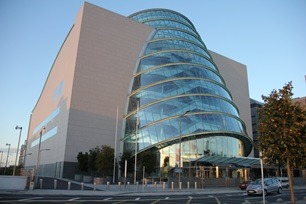 In much the same way that CES was a positive revelation for me the first time I went thanks to the prodding and cajoling of Buzz Knight about six years ago, I have had an epiphany this month – and this time, it’s about international broadcasting.
In much the same way that CES was a positive revelation for me the first time I went thanks to the prodding and cajoling of Buzz Knight about six years ago, I have had an epiphany this month – and this time, it’s about international broadcasting.
Readers of this blog know (too well) about the many ways that we have benefitted as a company and as broadcasters from CES. The innovative atmosphere, the enthusiasm, and the ability to see around the corner have served both Jacobs Media and jacAPPS (and their clients) well.
And yet, given all the broadcast and media conventions I attend, I had never been to one outside of North America before. I had heard a lot about NAB Europe over the years, but never managed to get there.
Then late last year, James Cridland (better known as the U.K.’s “radio futurologist”) contacted me about speaking at Radiodays Europe in Dublin about the “connected car.” This is one of the areas where the States are, in fact, moving faster than Europe and other countries. Because everything is changing so rapidly on the automotive front, the thinking was that Radiodays attendees would be interested in how the new “center stacks” are changing the audio environment here in America.
So, last week, I was paired up with the brilliant Mike Hill – the man behind the amazing Radio Player, to talk about the threats and opportunities posed by the “connected car.” (A shot from backstage above, thanks to James.)
I could write an entire post about how well this convention is put together by product managers Anders Held and Rolf Brandrud and their enthusiastic teams. I could go on about the beautiful Dublin Convention Center (pictured at the beginning of this post).
It was a major league production from top to bottom. The event kicked off with an Irish drum ensemble entertaining from the top floor of the Convention Center – and then walking right onto the stage to begin the first day’s agenda. It set a great local tone, and also reminded Radiodays attendees about the power and majesty of music.
And having been fortunate enough to keynote three Super Sessions at The Radio Show, I can tell you that Radiodays had all that going – and there was never a doubt you were attending a radio convention.
And the sessions themselves were excellent – including many broadcasting CEOs, as well as the Prime Minister of Ireland, Enda Kenny who spoke at the conference. Everything was covered – from apps to social media to news journalism – within four concurrent streams. Yes, there were times when it was difficult to decide which session to attend, but that’s the mark of a strong conference.
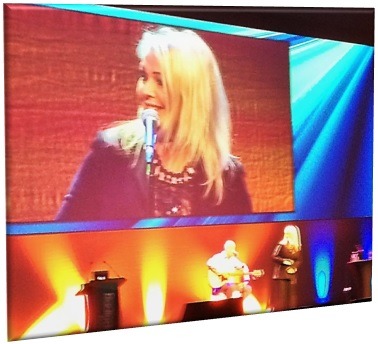 As noted, music played a role at Radiodays, too, including a fun interview and acoustic performance from Kim Wilde (remember “Kids In America”). She played a couple of songs with her guitarist brother and producer, Ricky, and reminded everyone about the importance of music. Kim hosts an ‘80s show on Magic 105.4 in London, and talked about how much she enjoys doing radio (and gardening!).
As noted, music played a role at Radiodays, too, including a fun interview and acoustic performance from Kim Wilde (remember “Kids In America”). She played a couple of songs with her guitarist brother and producer, Ricky, and reminded everyone about the importance of music. Kim hosts an ‘80s show on Magic 105.4 in London, and talked about how much she enjoys doing radio (and gardening!).
But aside from the sessions, the networking, and being back in Dublin, Radiodays was as enjoyable as CES – but in a different way – because of the vibe.
There is a palpable love for radio, and an excitement about new innovation and collaboration that is in the air at Radiodays. I encountered no one complaining about a lack of funding or about corporate dictates. While the structures of many of these broadcasting entities are different than in the States, and many are publicly funded, there is optimism in the air.
While more and more are experiencing consolidation, they – by and large – are looking forward, proud, and truly jazzed about the impact their stations and presenters have on their local marketplaces.
To me, the big change is this: It wasn’t that many years ago when international broadcasters (including many Canadians) journeyed to the U.S. to sit in hotel rooms and listen to American radio – to find new ideas and innovations.
Today, the reverse should be true. And while many Americans have very little knowledge of (or interest in) what’s happening globally in radio, they should.
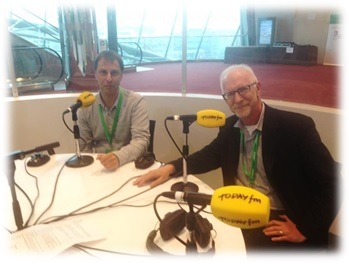 I spoke with several folks who are Radiodays veterans about the American POV, and the overriding sense is that they believe that most U.S. broadcasters don’t see any real value in understanding what is happening in radio from around the world. And they’re probably not wrong.
I spoke with several folks who are Radiodays veterans about the American POV, and the overriding sense is that they believe that most U.S. broadcasters don’t see any real value in understanding what is happening in radio from around the world. And they’re probably not wrong.
And yet, there’s so much to learn from these enthusiastic broadcasters. They’re doing the basics – the fundamental things American radio used to do – with great expertise and flair. There were two active broadcast studios in the center of the convention center – and local radio stations took turns to enthusiastically bring the vibe of Radiodays to their listeners. Radio was in the center ring – as it should be.
My co-presenter, Mike Hill and I, were interviewed by Today FM’s afternoon host, Matt Cooper. Matt was buttoned up, well-researched, and asked great questions. Professional from top to bottom.
Radio was on display outside the Dublin Convention Center, too. It seems that just about every station, show, and network has a remote vehicle that is elaborately equipped and ready to broadcast from anywhere. I took several pictures of these vehicles because it’s been so long since I’ve seen truly remote broadcasting facilities – and not a card table, a tent, and a mic on a table.
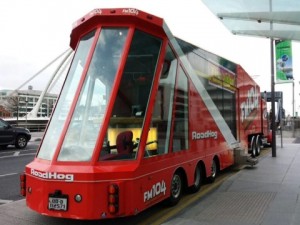 Larry Rosin and I were looking over the scene outside of Radiodays, and he commented about the amazing success any well-programmed American station could have if it owned a remote vehicle that could broadcast all over town, visiting cities, towns, and even country sides. These are the things American radio used to do better than anyone, but not today.
Larry Rosin and I were looking over the scene outside of Radiodays, and he commented about the amazing success any well-programmed American station could have if it owned a remote vehicle that could broadcast all over town, visiting cities, towns, and even country sides. These are the things American radio used to do better than anyone, but not today.
It would be beneficial for American radio managers – from PDs to CEOs – to see how radio “looks” in the U.K., in Australia, in Sweden, and in Romania. They were all represented at Radiodays – in fact, 60 countries in all and 1,300 delegates – and I will most assuredly be back. If you want to see the Twitter “play by play,” use the hashtag #RDE14. It was very busy.
So now you’ll hear it from me on both fronts – CES and Radiodays. But we all have a lot to learn in a radio industry that is changing faster than we are.
Thanks for the opportunity and the inspiration, Radiodays.
- What To Do If Your Radio Station Goes Through A Midlife Crisis - April 25, 2025
- A 2020 Lesson?It Could All Be Gone In A Flash - April 24, 2025
- How AI Can Give Radio Personalities More…PERSONALITY - April 23, 2025



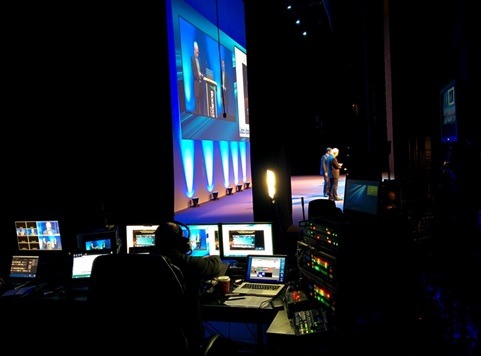

Came to read about innovation in European radio. Learned about Kim Wilde. I feel used.
Kim was just the device I used to get you to read the entire post. And she turned out to be a compelling part of the conference’s content – a nice mix of music & radio.
Ha…..I’ve got Kim Wilde in one of my jukeboxes when I wanna play DJ at home…..still great. Wonder how she sounded live?
She was great, Scott. Her and her brother, Ricky, played a couple of songs and she her voice and energy was excellent. Thanks for the note.
So glad you published a pic of the FM 104 Roadhog. What an impressive vehicle! Sounds like I missed a great conference.
It was a really great event and I was really blown away by some of the station vehicles I saw in Dublin – and jealous, too. Thanks, Dave.